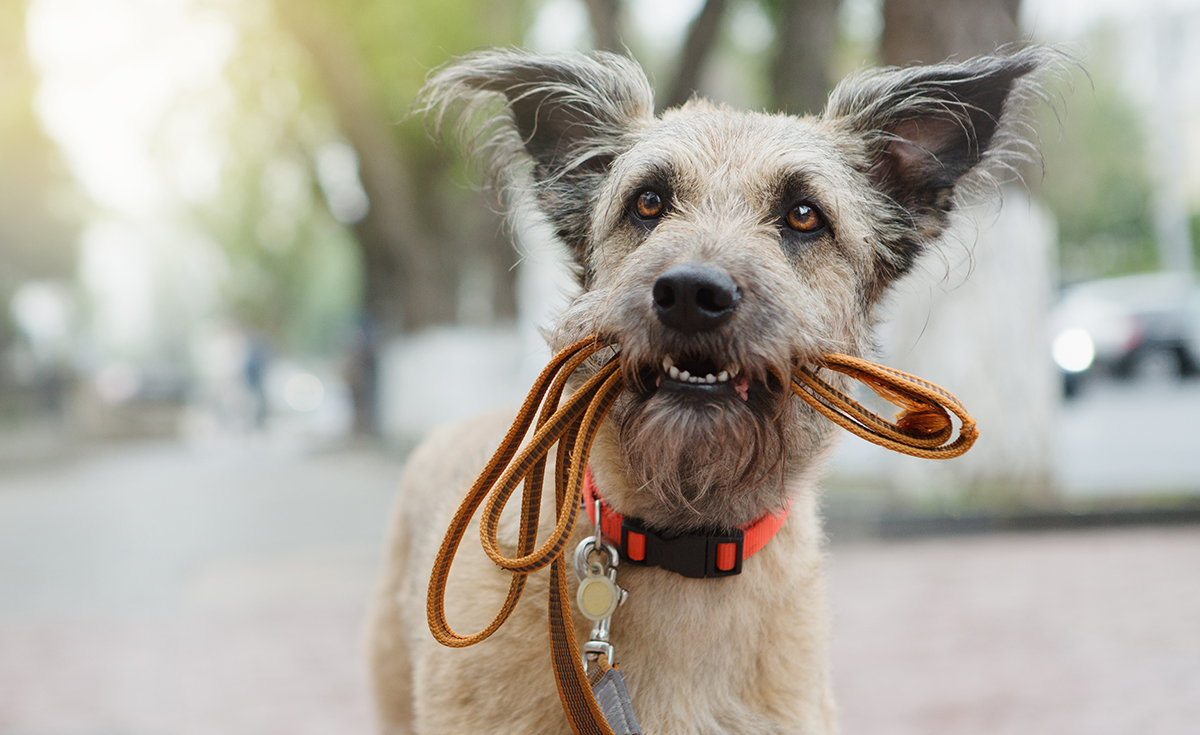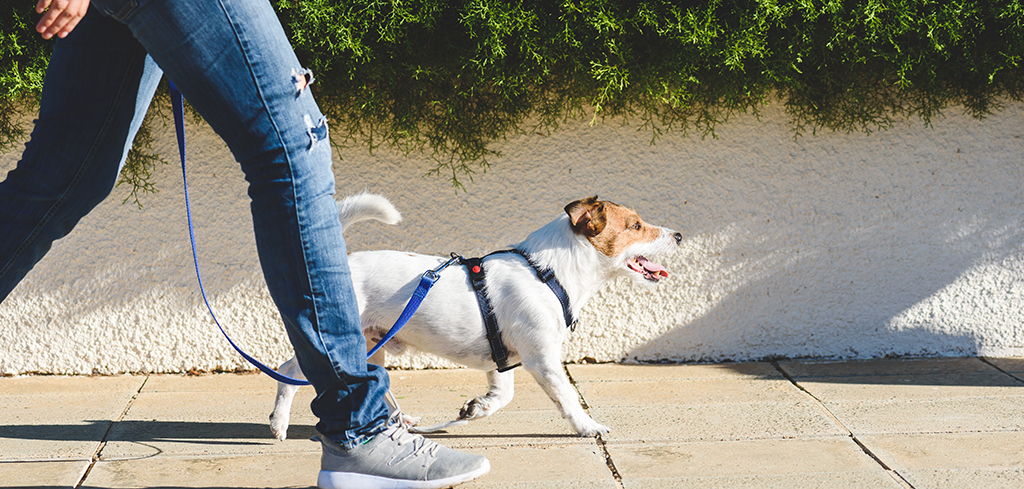How to Leash Train a Dog
Teaching your dog to walk on a leash is a crucial skill that all dog owners should have. It not only provides control and ensures the safety of your furry friend, but it also allows for enjoyable walks and outings together. While leash training may seem daunting, with patience, consistency, and the right techniques, you can teach your dog to walk on a leash with ease. In this guide, we will explore the best methods, tips, and products to help you leash-train your dog effectively.

Why Leash Training is Important
Before we dive into the training process, let’s understand why leash training is crucial for both you and your dog. Leash training offers several benefits:
- Safety: Walking your dog on a leash prevents them from running off, getting into dangerous situations, or getting lost.
- Control: A well-trained dog on a leash allows you to have better control in various environments, ensuring they stay by your side and follow your commands.
- Good Behavior: Leash training promotes good behavior, such as walking calmly, not pulling, and not lunging or chasing after distractions.
- Bonding: Building a strong bond with your dog is essential, and leash training offers the perfect chance to do just that. It allows you to communicate effectively with your furry companion while building trust, too!
Now that we understand the importance of leash training, let’s explore the step-by-step process to help you teach your dog to walk on a leash.
Step 1: Introduce the Collar or Harness and Leash
The first step in leash training is to introduce your dog to wearing a collar or harness and being attached to a leash. Start by allowing your dog to wear the collar or harness for short periods of time inside the house, making it a positive experience by offering treats and playtime. This will help your dog associate wearing the collar or harness with positive experiences.
Once your dog is comfortable with the collar or harness, attach a lightweight leash and let them drag it around the house under supervision. This will help them get used to the sensation of having something attached to them.
Step 2: Teach a Cue
Introducing a cue is crucial in leash training. Choose a word or sound that you will consistently use to signal to your dog that it’s time to go for a walk. It can be something simple like “let’s go” or “walk.” Use this cue every time you prepare to take your dog for a walk, associating it with the upcoming activity.
Step 3: Start Inside
Begin the training sessions inside your home or in a quiet, low-distraction area. This allows your dog to focus on the training without being overwhelmed by external stimuli. With your dog on a leash, use the cue word or sound, and start walking a few steps. Encourage your dog to walk by your side, rewarding them with treats, praise, and affection for staying close to you.
Step 4: Reinforce Loose Leash Walking
The ultimate goal of leash training is to teach your dog to be able to walk on a loose leash, without tugging or pulling you along. To reinforce loose leash walking, follow these steps:
- Stop when your dog pulls: As soon as your dog starts pulling on the leash, stop walking and stand still. Do not move forward until your dog releases tension on the leash and returns to your side.
- Reward for good behavior: When your dog walks by your side without pulling, reward them with treats and praise. This positive reinforcement reinforces the desired behavior and encourages them to continue walking nicely on the leash.
- Change directions: If your dog continues pulling, change directions abruptly. This will redirect their attention and teach them to pay attention to your movements. Reward them when they walk by your side in the new direction.
Consistency and patience are key during this stage. It may take time for your dog to understand the concept of loose leash walking, so be prepared for multiple training sessions.

Step 5: Gradually Increase Distractions
Once your dog has mastered loose leash walking inside your home, it’s time to gradually introduce more distractions. Start by practicing in your backyard or a quiet park where there are minimal distractions. As your dog becomes more comfortable, slowly increase the level of distractions by walking in busier areas or places with more people and other dogs.
Remember to always reward and reinforce good behavior during these training sessions. Consistency and positive reinforcement will help your dog associate walking calmly on a leash with positive experiences.
Step 6: Use Positive Reinforcement
Positive reinforcement is a powerful training technique that involves rewarding your dog for desired behaviors. When leash training, use treats like our Wholesomes Rewards or Jerky, praise, and affection to reward your dog for walking nicely on the leash. Carry small, bite-sized treats in a treat pouch or pocket during walks to easily reward your dog for good behavior.
Step 7: Choose the Right Leash and Harness
Having the right equipment can make a significant difference in leash training. Here are a few types of leashes and harnesses that can aid in teaching your dog to walk on a leash:
- Front-clip Harness: A front-clip harness is designed to discourage pulling by redirecting your dog’s attention towards you when they pull on the leash. It reduces the risk of neck injuries and provides better control.
- Head Halter: A head halter, similar to a horse’s halter, fits over your dog’s snout and allows you to control their head movements. It provides excellent control and is effective in managing pulling behavior.
- Standard Leash: A standard leash, typically 4 to 6 feet long, is a basic leash option that allows you to maintain control over your dog during walks. Choose a durable and comfortable leash that is suitable for your dog’s size and strength.
When selecting a harness, collar and leash, consider your dog’s size, breed, and behavior. Consult with a professional dog trainer or pet store expert to find the best option for your specific needs.
Additional Tips for Leash Training Success
To enhance the effectiveness of your leash training efforts, consider implementing these additional tips:
- Be consistent: Consistency is key in dog training. Stick to a regular walking schedule and use the same training techniques and cues each time.
- Keep training sessions short: Dogs have short attention spans, so be sure to avoid long training sessions. Aim for multiple short, but focused, training sessions throughout the day.
- Stay calm and patient: Leash training can be challenging at times, but it’s important to remain calm and patient. Frustration or anger can hinder your dog’s progress and create negative associations with walking on a leash.
- Avoid retractable leashes: Retractable leashes can encourage pulling behavior and reduce your control over your dog. Stick to a standard leash for better control and safety.
Recommended Leash Products for Leash Training
To help you find the best leash products for leash training, we have compiled a list of highly recommended options:
- Zeedog Classic Airleash: This leash features a shock-absorbing mechanism and a locking hook for safer and more comfortable walks.
- Harness Lead: This harness and leash combo discourages pulling with its no-pull design, providing better control during walks.
- IOKHEIRA Dog Leash: This budget-friendly leash offers additional features such as a secondary handle and a car safety buckle.
- High Kiss Long Leash: Ideal for reducing pulling and improving recall, this long leash comes in various lengths, colors, and widths.
When choosing a leash, consider the specific needs of your dog and your training goals. Consult with professionals or read product reviews to ensure you select the most suitable leash for your dog.
Conclusion
Leash training is an essential skill that every dog owner should prioritize. By following the steps outlined in this guide, using positive reinforcement, and selecting the right leash and harness, you can teach your dog to walk on a leash with ease. Remember to be patient, consistent, and always prioritize the safety and well-being of your furry friend.
